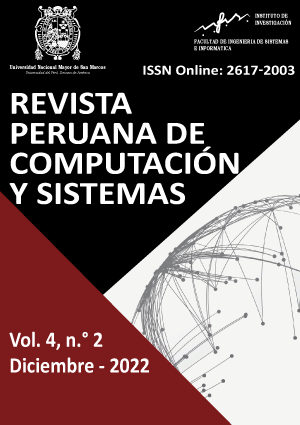Tool for the modeling and code generation of Software Architectures based on Microservices and Domain Driven Design (DDD)
DOI:
https://doi.org/10.15381/rpcs.v4i2.24855Keywords:
Software Architecture, microservices, architectural patterns, domain driven designAbstract
Different companies that provide digital services must have sophisticated software that allows various operations to be carried out in a timely and safe manner, keeping the program in constant improvement, updating and options to incorporate new market technologies. Many companies still use legacy systems as their main tool for business processes, while others use outdated technologies that limit their ability to upgrade or migrate to modern technologies, turning this scenario into a threat to the security of IT systems with which they operate, which jeopardizes the performance and productivity of the company. This article implements a software architecture modeling and code generation tool based on Microservices and Domain Driven Design (DDD), to facilitate and accelerate the development of software projects and the migration of legacy systems to new independent services, by while using modern technologies to account for interoperability, security, scalability, modularity among other quality attributes. To validate the contribution of the tool, it was validated with experts in software design and construction, which revealed the efficiency and effectiveness of the model and code generation, as well as the acceptance of the tool's usability.
Downloads
Published
Issue
Section
License
Copyright (c) 2022 Waldo Jefferson Trebejo Loayza, Fany Sobero Rodríguez

This work is licensed under a Creative Commons Attribution 4.0 International License.
THE AUTHORS RETAIN THEIR RIGHTS:
(a) The authors retain their trademark and patent rights, and also over any process or procedure described in the article.
(b) The authors retain the right to share, copy, distribute, execute and publicly communicate the article published in the Revista Peruana de Computación y Sistemas (for example, place it in an institutional repository or publish it in a book), with acknowledgment of its initial publication in Revista Peruana de Computación y Sistemas.
(c) Authors retain the right to make a subsequent publication of their work, to use the article or any part of it (for example: a compilation of their work, lecture notes, thesis, or for a book), provided that they indicate the source. of publication (authors of the work, magazine, volume, number and date).



